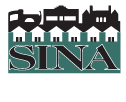Building a NATIONAL model
A Comprehensive Approach That Addresses Causes, Not Just SymptomRevitalizing neighborhoods is a complex task because there are so many deep-rooted causes behind their decline. Like similar urban areas around the country, the community close to the SINA institutions has been the victim of major structural economic changes. Originally built for factory workers and their families, over the past several decades it has become increasingly out of pace with the post-industrial Hartford mainstream.
Its economic plight was accompanied by the deterioration of its physical and social infrastructure. Housing was abandoned, crime increased, stores closed and confidence plunged. By the early 1990s the outlook for this section of Hartford was bleak.
Though the degree of SINA’s involvement in neighborhood matters has varied over the years, its approach has always been based on leveraging the talent and resources of its member institutions for the benefit of the entire community. The SINA Neighborhood Initiative also recognizes that creating a livable community is not simply a matter of changing the scenery: It requires a comprehensive approach that addresses underlying causes, not just symptoms.
Besides its emphasis on building dynamic community partnerships, the SINA model uses a high impact/high visibility approach to development projects. Tackling the biggest challenges has become a trademark of the Neighborhood Initiative.
An example of this approach is the creation of The Learning Corridor, a 16-acre campus of public magnet schools on what had been perhaps the most blighted and environmentally contaminated property in the city. The Learning Corridor site is located a short distance from the SINA institutions, between two major traffic arteries. Several proposals to develop the property had failed, leaving it a nagging source of frustration. The SINA Learning Corridor partnership included the City of Hartford, the Hartford Board of Education, the State Board of Education and the State Environmental Protection Agency. SINA member institutions provided initial capitalization of $10 million to move the project forward without delay. Trinity College assumed a major role in the educational programming and Hartford Hospital has been a key player in construction oversight and financial planning as well as on-going facilities management.
Another example of SINA’s high impact approach is the commercial revitalization initiative. Park Street is the neighborhood’s major retail artery, and the city’s busiest. It has weathered decades of ups and downs, but has always been considered an asset to the city, particularly because it is the hub of the area’s growing Latino population. Nevertheless, over the past three decades, dozens of revitalization proposals have evaporated with little consequence, primarily because no consensus could be reached among key stakeholders. SINA has reversed this syndrome by forging a strong partnership with the long-prominent Spanish American Merchants Association, and the City of Hartford. Working with an internationally recognized planning firm, the group developed an appealing renewal strategy and, using city streetscape funds, has moved quickly into implementation. SINA and the merchants’ association has organized business and property owners in support of a “special services district” ordinance which will fund ongoing maintenance and enhance public safety measures along the street.
SINA’s housing program, Cityscape Homes, has accomplished what had frustrated many housing experts over the years: finding a solid market of buyers. Working with partners Broad-Park Development Corporation and Mutual Housing Association of Greater Hartford, SINA has built an indigenous market of neighborhood residents, many of whom believed they would never be homeowners. Today there is a waiting list for Cityscape homes. The partnership uses a “target block” approach to its housing development activities, rather than the once popular scattered-site method. They zero in on the most blighted properties and deal with all of them as one project, instead of doing one property and hoping that inspired private investors will do the rest.
Soon after the announcement of the new Neighborhood Initiative in 1996, SINA partnered with HART and other community groups to establish a neighborhood Job Center in a highly-visible location on one of the area’s main streets. SINA purchased a building, renovated it, and then helped secure operating grants from several foundations. Recently SINA entered into an operating partnership with the Connecticut Puerto Rican Forum, an organization with a more than 20 year history in employment and training. Since its inception, the Job Center has served more than 3000 people.
The major components of the SINA Neighborhood Initiative are supported by SINA’s constant participation in and support of community activities.
